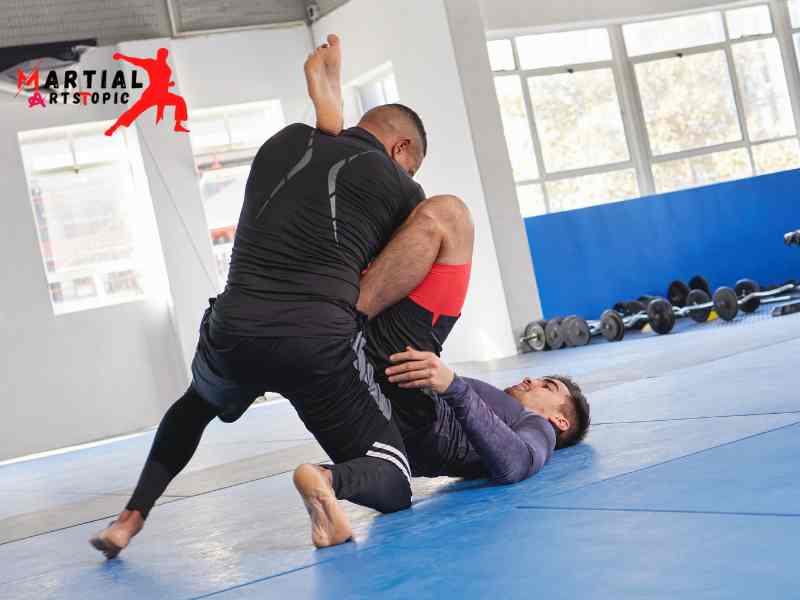
The History and Origins of Jiu Jitsu: From Japan to Brazil
The History and Origins of Jiu Jitsu: From Japan to Brazil Jiu Jitsu, also known as Brazilian Jiu Jitsu, is a martial art that has gained immense popularity in recent years. Known for its effective techniques and focus on ground fighting, Jiu Jitsu has become a staple in mixed martial arts (MMA) competitions worldwide. But where did this martial art originate, and how did it make its way from Japan to Brazil? Let’s dive into the intriguing history of Jiu Jitsu.
Origins in Japan
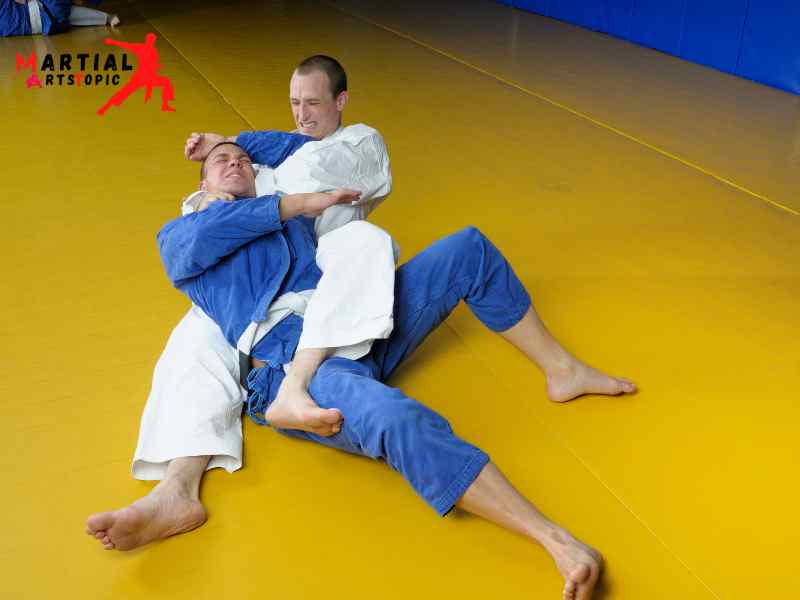
Jiu Jitsu Martial Arts traces its roots back to feudal Japan, where it was developed as self-defense by the samurai warriors. The samurais needed a martial art that would allow them to defend themselves while wearing heavy armor and facing armed opponents. Thus, Jiu Jitsu was born.
The techniques of Jiu Jitsu were primarily focused on leverage and joint locks, enabling a smaller, weaker opponent to overcome a larger, stronger one. The art emphasized using an opponent’s strength against them, rather than relying on brute force.
Jigoro Kano and the Birth of Judo
In the late 19th century, Jiu Jitsu underwent a significant transformation thanks to Jigoro Kano, a Japanese martial artist and educator. Kano recognized the need to modernize Jiu Jitsu to make it more accessible and practical for all individuals, regardless of their physical attributes.
Kano developed a changed version of Jiu Jitsu, which he named Kodokan Judo. This new martial art incorporated elements of Jiu Jitsu while incorporating a system of rules and a ranking system. Kano’s vision was to create a martial art that focused on mental and physical development, as well as self-defense.
From Japan to Brazil
The story of how Jiu Jitsu made its way from Japan to Brazil is fascinating. In the early 20th century, Mitsuyo Maeda, a Japanese judoka and one of Kano’s top students, traveled to Brazil to spread the teachings of Judo. Maeda’s journey would have a profound impact on the future of Jiu Jitsu.
In Brazil, Maeda met Carlos Gracie, a young Brazilian who was fascinated by martial arts. Recognizing Maeda’s skills and knowledge, Carlos Gracie became his student and learned the art of Judo. Carlos, along with his brothers, would go on to further develop and change the techniques of Judo, eventually creating a new martial art known as Brazilian Jiu Jitsu.
The Gracie Family Legacy
The Gracie family played a pivotal role in the popularization and evolution of Brazilian Jiu Jitsu. Helio Gracie, one of Carlos Gracie’s brothers, helped to refine and adapting the techniques to suit a smaller, weaker individual facing a larger, stronger opponent. This emphasis on leverage and technique became the hallmark of Brazilian Jiu Jitsu.
The Gracie family gained international recognition when Helio’s son, Royce Gracie, dominated the early Ultimate Fighting Championship (UFC) events in the 1990s. Royce’s victories showcased the effectiveness of Brazilian Jiu Jitsu, sparking a revolution in the world of martial arts and leading to its widespread adoption by MMA fighters.
Global Expansion
In the 1980s and 1990s, Brazilian Jiu Jitsu gained international attention through the rise of mixed martial arts (MMA) competitions, such as the Ultimate Fighting Championship (UFC). Brazilian Jiu Jitsu practitioners, such as Royce Gracie, demonstrated their skills and showcased the effectiveness of the art on a global stage.
Since then, Brazilian Jiu Jitsu has continued to grow in popularity worldwide, with schools and academies opening up in various countries. It has become an integral part of MMA training and is practiced by individuals of all ages and skill levels, including professional fighters, self-defense enthusiasts, and recreational practitioners.
What is Jiu Jitsu Martial Arts?
Jiu Jitsu is a dynamic martial art that focuses on grappling and ground fighting techniques. Originating in Japan, it later developed into Brazilian Jiu Jitsu, which emphasizes leverage and technique to overcome larger opponents. Practitioners learn a variety of joint locks, chokeholds, and takedowns, making it a highly effective form of self-defense. Jiu Jitsu also promotes mental and physical fitness, teaching patience, discipline, and problem-solving skills. Whether you’re interested in self-defense, competition, or overall well-being, Jiu Jitsu offers a challenging and rewarding journey for practitioners of all ages and skill levels.
Training and Conditioning for Jiu Jitsu
Training and Conditioning for Jiu Jitsu: Unlock Your Martial Arts Potential Are you passionate about martial arts and looking to take your skills to the next level? Look no further than Jiu Jitsu–a captivating and dynamic form of martial arts that combines self-defense techniques, ground fighting, and strategic movements. But to truly excel in this sport, it’s crucial to focus not only on training but also on conditioning your body for the intense physical demands of Jiu Jitsu. In this blog post, we will explore the importance of training and conditioning for Jiu Jitsu and provide you with helpful tips to enhance your performance on the mat.
Why is Training and Conditioning Essential for Jiu Jitsu?
Jiu Jitsu Martial Arts a sport that requires immense physical and mental strength. From executing various grappling techniques to maintaining control over an opponent, Jiu Jitsu demands a high level of endurance, flexibility, and explosive power. Training and conditioning play a vital role in preparing your body to meet these demands, helping you to perform at your best and reduce the risk of injuries.
Building Strength and Endurance
To become proficient in Jiu Jitsu, it’s essential to have a solid foundation of strength and endurance. Strength training exercises, such as weightlifting, bodyweight exercises, and resistance training, can help you build the muscle power to execute techniques effectively. Incorporating cardiovascular exercises like running, swimming, or cycling into your training routine will improve your endurance, allowing you to last longer during intense matches or sparring sessions.
Enhancing Flexibility and Mobility
Flexibility and mobility are key components of Jiu Jitsu. Being able to move fluidly and maintain a wide range of motion is crucial in countering your opponent’s attacks and executing submissions. Incorporating stretching exercises, yoga, and mobility drills into your training routine can help improve your flexibility and mobility, enhancing your overall performance on the mat.
Explosive Power and Speed

Jiu Jitsu requires quick movements and explosive bursts of power, especially during takedowns and sweeps. Plyometric exercises, such as box jumps, medicine ball throws, and explosive push-ups, can help you develop the explosive power and speed necessary for these techniques. Incorporating agility ladder drills and sprints into your training routine can also improve your footwork and reaction time, giving you a competitive edge in the ring.
Core Strength and Stability
A strong core is the foundation of any martial arts discipline, including Jiu Jitsu. Your core muscles provide stability, balance, and control, enabling you to maintain positions, execute submissions, and defend against attacks effectively. Incorporate exercises such as planks, Russian twists, and leg raises to strengthen your core and improve your overall stability.
Injury Prevention and Recovery
Jiu Jitsu is a physically demanding sport that can put an immense strain on your body. Proper training and conditioning not only enhance your performance but also help prevent injuries. By strengthening the muscles surrounding your joints and improving your overall fitness level, you can reduce the risk of common Jiu Jitsu injuries, such as sprains, strains, and joint dislocations. Incorporating rest days and recovery techniques, such as foam rolling and stretching, into your training routine can aid in muscle repair and prevent overuse injuries.
Jiu Jitsu for Self-Defense: Techniques to Keep You Safe
Jiu Jitsu for Self-Defense: Techniques to Keep You Safe In today’s world, personal safety is of utmost importance. Whether you’re walking alone at night or finding yourself in a potentially dangerous situation, knowing how to protect yourself is crucial. That’s where Jiu Jitsu comes in. This martial art is not only a great sport, but also an effective form of self-defense. In this blog post, we will explore some Jiu Jitsu techniques that can help keep you safe in various situations.
Jiu Jitsu, also known as Brazilian Jiu Jitsu (BJJ), is a martial art that focuses on ground fighting and submissions. It emphasizes technique and leverage rather than relying on brute strength, making it an ideal choice for self-defense. By learning Jiu Jitsu, you can gain the skills and confidence to defend yourself against larger and stronger opponents.
One of the fundamental aspects of Jiu Jitsu is self-awareness. Being aware of your surroundings and potential threats is the first step towards staying safe. By practicing Jiu Jitsu, you develop a heightened sense of awareness and learn to recognize dangerous situations. This alone can prevent many altercations from escalating.
Now let’s dive into some Jiu Jitsu techniques that can be applied in different self-defense scenarios:
- Escaping from Mount: The Mount position is when an attacker sits on top of you, pinning you down. In Jiu Jitsu, you learn various techniques to escape from this position, such as bridging, shrimping, and hip escapes. By mastering these techniques, you can quickly regain control and get back on your feet.
- Guard Techniques: The Guard is a defensive position where you use your legs to control an opponent who is on top of you. By learning different guard techniques like the Triangle Choke or Armbar, you can effectively neutralize an attacker and potentially submit them.
- Escaping from Bear Naked Choke: The Rear Naked Choke is a common attack where an assailant tries to strangle you from behind. Jiu Jitsu teaches you how to defend against this by tucking your chin, controlling the attacker’s arms, and ultimately escaping from the chokehold.
- Maintaining Distance: Sometimes, the best self-defense technique is to avoid physical confrontation altogether. Jiu Jitsu teaches you how to maintain a distance from potential threats using footwork, angles, and timing. By understanding these principles, you can prevent dangerous situations from escalating and safely remove yourself from harm’s way.
Remember, learning self-defense techniques is not just about physical strength; it’s about mental preparedness and strategy. Jiu Jitsu trains you to stay calm under pressure, think critically, and make smart decisions in high-stress situations.
If you’re interested in learning Jiu Jitsu for self-defense, consider joining a reputable martial arts academy or finding a qualified instructor. Regular practice and dedication are key to mastering the techniques and building the skills.
The Different Styles of Jiu Jitsu
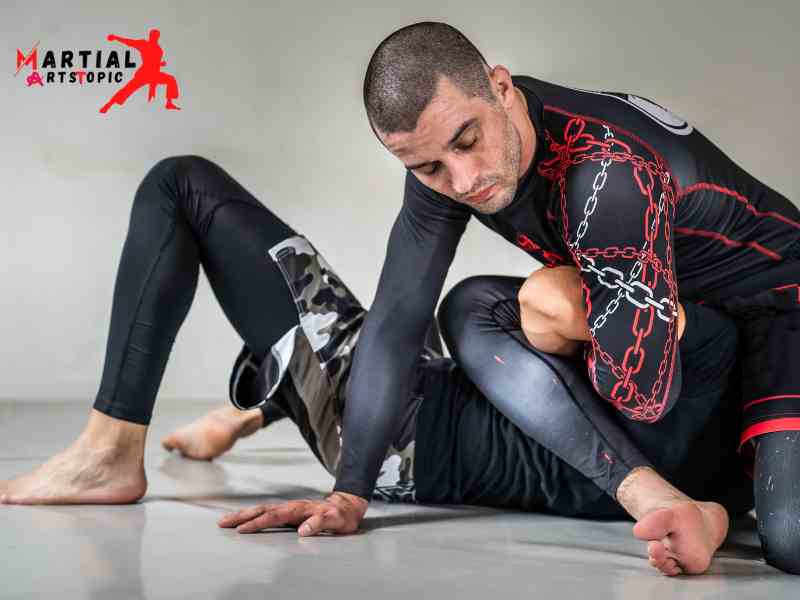
Jiu Jitsu, also known as Brazilian Jiu Jitsu or BJJ, is a martial art that has gained immense popularity worldwide. With its focus on ground fighting and submission techniques, Jiu Jitsu offers a unique and effective approach to self-defense and physical fitness. In this comprehensive blog post, we will delve into the different styles of Jiu Jitsu, exploring their origins, techniques, and unique characteristics.
- Traditional Jiu Jitsu: Originating in Japan, traditional Jiu Jitsu focuses on self-defense techniques, joint locks, and throws. It emphasizes using an opponent’s energy and momentum against them, making it an ideal martial art for individuals of all ages and physical abilities.
- Brazilian Jiu Jitsu (BJJ): Developed from traditional Jiu Jitsu, BJJ places a strong emphasis on ground fighting and submission holds. Practitioners learn how to control and submit opponents using leverage and technique, making it a highly effective martial art for self-defense and competitive grappling.
- Japanese Jiu Jitsu: This style encompasses a wide range of techniques, including striking, throwing, joint locks, and grappling. It focuses on practical self-defense applications and emphasizes the use of an opponent’s energy to neutralize threats.
- Gracie Jiu Jitsu: Established by the Gracie family in Brazil, Gracie Jiu Jitsu is renowned for its practical self-defense techniques. It prioritizes leverage and technique over strength, enabling practitioners to defend themselves against larger and stronger opponents.
- No-Gi Jiu Jitsu: While traditional Jiu Jitsu and BJJ are typically practiced with a gi (uniform), no-gi Jiu Jitsu focuses on grappling without the use of a gi. This style places greater emphasis on body control and leverages because of the absence of a gi for gripping.
- Sports Jiu Jitsu: As Jiu Jitsu gained popularity as a competitive sport, sports Jiu Jitsu emerged as a style focused on scoring points in tournaments. It emphasizes techniques that score points in a competition setting, including sweeps, takedowns, and submission attempts.
Each style of Jiu Jitsu offers unique benefits and appeals to different practitioners based on their goals and preferences. Whether you are interested in self-defense, physical fitness, or competitive grappling, there is a style of Jiu Jitsu that will suit your needs and interests.
The Art of Ground Fighting: Strategies and Tactics in Jiu Jitsu
In the fast-paced world of martial arts, Jiu Jitsu stands out as a powerful and effective combat style. With its focus on ground fighting techniques, Jiu Jitsu provides practitioners with a unique set of strategies and tactics that can prove invaluable in self-defense situations. In this blog post, we will delve into the world of Jiu Jitsu, exploring the essential strategies and tactics that can help you master this incredible martial art.
Understanding Jiu Jitsu
Jiu Jitsu, also known as Brazilian Jiu Jitsu (BJJ), originated from the ancient Japanese martial art of Jujutsu. It emphasizes leverage, technique, and the use of submissions to overcome larger and stronger opponents. Unlike other martial arts that rely on striking techniques, Jiu Jitsu focuses on taking the fight to the ground, where practitioners can use grappling and submission holds to gain control over their adversaries.
Strategies in Jiu Jitsu
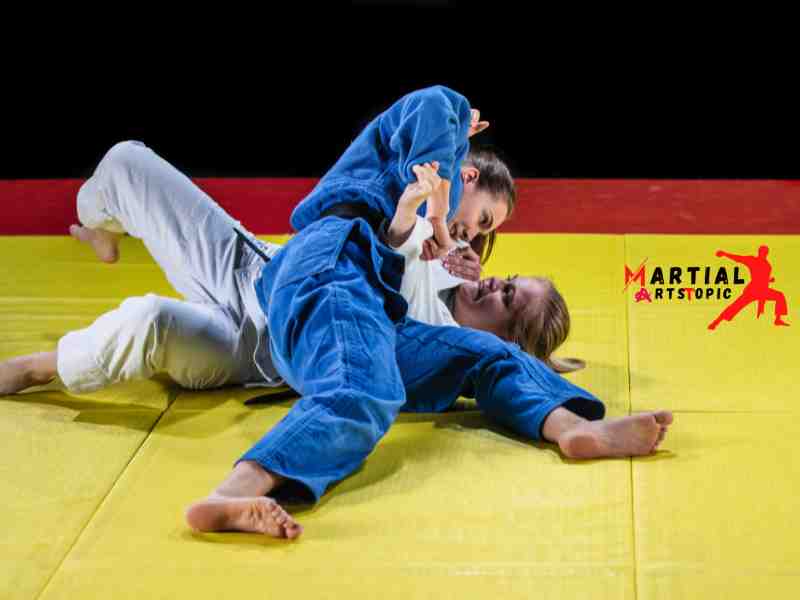
- Positional Control: One of the fundamental aspects of Jiu Jitsu is gaining superior positioning over your opponent. By controlling your opponent’s body and manipulating their balance, you can effectively neutralize their attacks while setting up your own offense. Positions like mount, side control, and back control offer dominant control and provide the foundation for successful attacks and submissions.
- Effective Guard Play: Guard play is a crucial aspect of Jiu Jitsu, allowing you to defend against an opponent’s attacks while setting up sweeps and submissions. Whether you prefer the open guard, closed guard, or half guard, mastering different guard positions and transitions will provide you with a versatile arsenal of techniques to keep your opponent at bay.
- Escapes and Reversals: Jiu Jitsu empowers practitioners with a wide range of techniques to escape from disadvantageous positions, such as being mounted or trapped in submissions. Learning and practicing various escapes and reversals will help you regain control and turn the tables on your opponent.
- Submission Techniques: Submissions are the pinnacle of Jiu Jitsu, allowing practitioners to force their opponents into tapping out or surrendering. Arm locks, chokes, leg locks, and joint manipulations are just some techniques that Jiu Jitsu offers. By honing your submission skills, you can swiftly end a fight or defend yourself effectively.
Tactics in Jiu Jitsu
- Timing and Distance Management: Timing is everything in Jiu Jitsu. Knowing when to engage, disengage, or transition between positions is crucial for success. Understanding distance management allows you to control the pace of the fight, close the gap, or keep your opponent at bay, depending on your strategy.
- Pressure and Weight Distribution: Applying pressure is a critical tactic in Jiu Jitsu. By strategically distributing your weight and maintaining constant pressure on your opponent, you can exhaust them and limit their options, making it easier to execute your techniques.
- Chain Attacks: Jiu Jitsu is all about chaining attacks together seamlessly. By combining various techniques and transitions, you can keep your opponent guessing and create opportunities for submissions or helpful positions.
- Mental and Emotional Control: Jiu Jitsu is physically demanding, but it also requires mental and emotional fortitude. Staying calm, focused, and composed during training and competitions is essential for making quick and strategic decisions.
Jiu Jitsu for Women: Empowerment and Self-Defense
Jiu Jitsu for Women: Empowerment and Self-Defense In recent years, there has been a significant rise in the number of women taking part in martial arts, particularly jiu jitsu. And it’s no surprise why! Jiu jitsu offers women not only self-defense but also empowerment in various aspects of their lives. In this blog post, we will delve into the world of jiu jitsu for women and explore how it can be a transformative experience.
Jiu jitsu, a martial art originating from Japan, focuses on ground fighting and submission holds. It uses leverage and technique to overcome physical strength, making it an ideal self-defense option for individuals of all sizes, including women. With jiu jitsu, women can learn how to defend themselves effectively against larger and stronger opponents, giving them a sense of security and confidence in their everyday lives.
One of the most significant benefits of practicing jiu jitsu is the empowerment it brings to women. As they progress in their training, women develop not only physical strength, but also mental fortitude. Jiu jitsu requires strategizing, problem-solving, and quick decision-making, all of which contribute to building a strong mindset. Through consistent practice, women learn to trust their instincts, make assertive choices, and stay calm under pressure.
Moreover, jiu jitsu provides a supportive and inclusive community for women. Training in a predominantly male sport may seem intimidating at first, but jiu jitsu academies and clubs have made tremendous efforts to create a safe and inclusive environment for women practitioners. Female-only classes and training sessions are often offered to help women feel more comfortable and confident as they embark on their jiu jitsu journey. The camaraderie and support from fellow female practitioners create a sense of belonging and sisterhood, fostering personal growth and empowerment.
Beyond self-defense and empowerment, jiu jitsu offers a myriad of other physical and mental health benefits for women. Regular practice helps improve cardiovascular fitness, strength, flexibility, and coordination. It also serves as an excellent stress-reliever and promotes mindfulness. The focus required during jiu jitsu training allows women to temporarily disconnect from their daily worries and be fully present in the moment, promoting mental well-being and overall happiness.
Besides the physical and mental aspects, jiu jitsu also teaches valuable life skills, such as discipline, perseverance, and humility. The journey of learning jiu jitsu is continuous, with new techniques and challenges to overcome at every level. This not only instills a sense of discipline but also teaches women the importance of setting goals, working hard, and never giving up. The humility gained through training extends beyond the mat and positively impacts various areas of life, promoting personal growth and success.
Jiu Jitsu Techniques Every Martial Artist Should Know
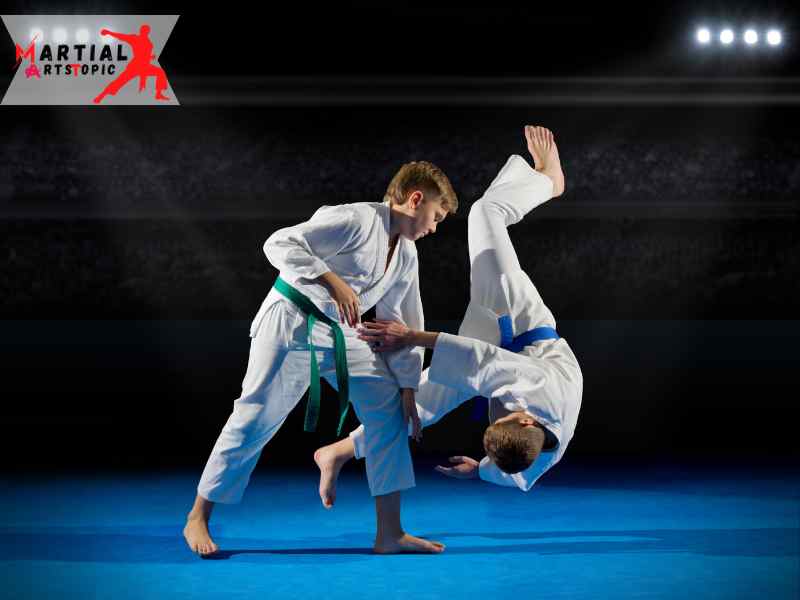
Jiu Jitsu Techniques Every Martial Artist Should Know Jiu Jitsu, also known as Brazilian Jiu Jitsu, is a martial art that focuses on grappling and ground fighting. It is a highly effective self-defense system that people of all ages and sizes can use. Whether you are a beginner or an experienced martial artist, learning Jiu Jitsu techniques can enhance your fighting skills and overall fitness. In this blog post, we will discuss some essential Jiu Jitsu techniques that every martial artist should know.
- The Guard: The guard is one of the most important positions in Jiu Jitsu. It is a defensive position where you use your legs to control and neutralize your opponent. By learning different guard techniques, such as the closed guard, open guard, and butterfly guard, you can effectively defend yourself and set up various submissions.
- Mount: The mount position is a dominant position where you sit on top of your opponent’s chest. From this position, you have control over your opponent and can deliver powerful strikes or set up submissions. Learning how to establish and maintain the mount is crucial for any martial artist.
- Side Control: Side control is another dominant position in Jiu Jitsu. From here, you can control your opponent’s movement and apply various submission holds. By mastering side control techniques, you can effectively immobilize your opponent and transition to more helpful positions.
- Escapes: In Jiu Jitsu, it is important to know how to escape from unfavorable positions. Learning escape techniques, such as bridging and shrimping, can help you regain control and turn the tables on your opponent. Escapes are essential for survival in Jiu Jitsu and can prevent you from being submitted.
- Submissions: Submissions are the goal in Jiu Jitsu. By applying joint locks or chokes, you can force your opponent to submit or render them unconscious. Some common submissions include arm bars, triangle chokes, and rear-naked chokes. Learning a variety of submissions will give you a wide range of options during a fight.
- Takedowns: While Jiu Jitsu is primarily a ground fighting martial art, it is important to know how to take your opponent down to the ground. Learning takedown techniques, such as double-leg takedowns and single-leg takedowns, will allow you to dictate the fight and take control from the start.
- Sweeps: Sweeps are techniques used to reverse the position and gain the advantage over your opponent. By using leverage and timing, you can sweep your opponent and end up in a more dominant position. Sweeps are essential for turning the tide of a fight and transitioning from defense to offense.
- Drills and Sparring: To truly master Jiu Jitsu techniques, it is important to practice them through drills and sparring. By drilling techniques repeatedly, you can develop muscle memory and improve your execution. Sparring allows you to apply the techniques in a realistic and dynamic setting, testing your skills against resisting opponents.
Conclusion
Jiu Jitsu Martial Arts is a highly effective martial art that focuses on ground fighting and grappling techniques. Its emphasis on leverage and technique makes it suitable for individuals of all ages and sizes. Whether you’re looking to improve your self-defense skills, get in shape, or compete in tournaments, Jiu Jitsu offers a challenging yet rewarding journey. Embracing the principles of discipline, respect, and perseverance, practitioners of Jiu Jitsu can experience significant personal growth both on and off the mat. So, whether you’re a beginner or an experienced martial artist, Jiu Jitsu has something valuable to offer.
